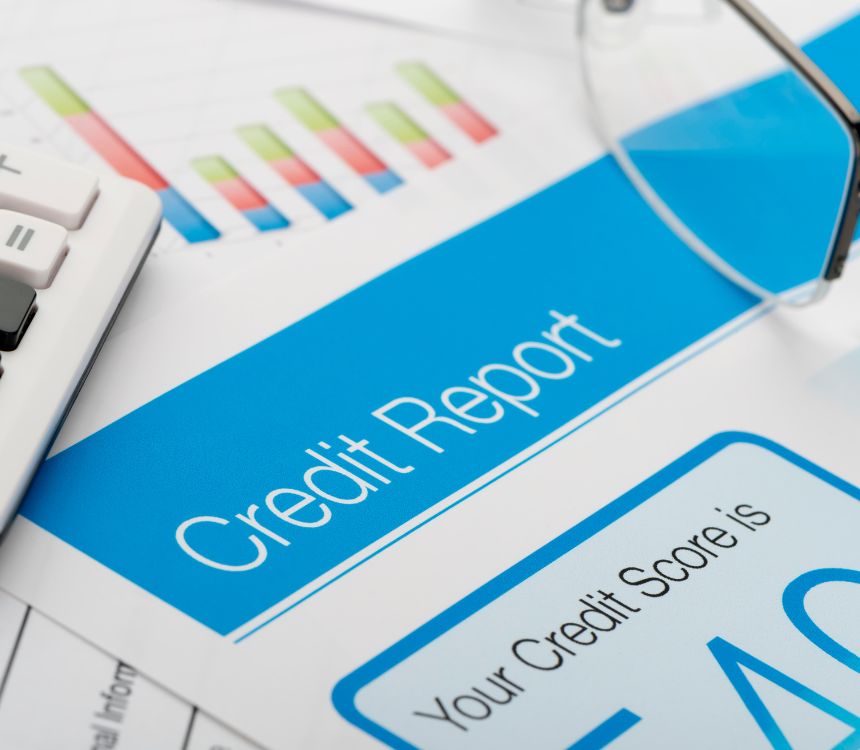A default on your credit report can feel like a heavy cloud hanging over your financial life. It can make it harder to get approved for loans, credit cards, or even a mobile phone contract. But the good news? You can take steps to deal with it. This guide explains in simple, straight-talking terms how to remove a default from your credit report in the UK.
What Is a Default?
Let’s start with the basics. A default happens when you’ve missed payments on a credit agreement – like a loan, credit card or utility bill – for a period of time, usually three to six months. When that happens, the lender can issue a default notice and mark your credit file accordingly.
This stays on your credit report for six years, even if you later pay the debt off in full. It’s visible to all lenders who check your file, and it can seriously impact your chances of getting credit.
Start your mortgage journey with confidence.
Speak to an advisor now.
Can You Remove a Default From Your Credit Report?
Here’s the honest answer: not always, but in some situations, yes.
A default can only be removed entirely from your credit report if it was added in error or if it’s proven to be unfair or incorrect. You can’t remove it just because you don’t like how it affects your score.
That said, if there’s a mistake or something doesn’t add up, you have every right to challenge it. And if the default is valid, there are still things you can do to lessen the impact.
Steps to Remove a Default From Your Credit Report
1. Get Copies of Your Credit Reports
Start by checking your credit reports from all three main credit reference agencies in the UK:
You can access them for free online. Look through each report carefully and make a note of any defaults listed.
2. Check for Errors
Next, examine the details of the default. Look out for:
- Wrong dates
- Incorrect balances
- Accounts you don’t recognise
- A default that was issued without prior warning
If something doesn’t look right, gather any evidence you have – such as emails, letters, payment receipts – and get ready to raise a dispute.
3. Raise a Dispute With the Credit Reference Agency
You can contact the agency directly and explain the error. They’ll usually investigate the issue within 28 days. If the lender can’t prove the default is accurate, it should be removed from your file.
If the agency refuses to remove it and you still believe it’s unfair, you can raise a complaint with the Financial Ombudsman Service.

4. Speak to the Lender
Sometimes it’s worth going directly to the lender who added the default. Especially if:
- You never received a default notice
- You were in financial difficulty at the time
- You’ve since paid the debt and want them to reconsider
In some cases, lenders will agree to remove or amend the default as a goodwill gesture – especially if it was due to unusual circumstances or poor communication.
5. Add a Notice of Correction
If you can’t get the default removed, you can still explain your side of the story. Add a Notice of Correction – a short statement (up to 200 words) that appears on your credit report. This lets future lenders see the background behind the default.
It won’t erase the default, but it can help, especially if you’ve since kept up with repayments.
When Will the Default Be Removed Automatically?
Even if you can’t get it removed early, defaults automatically disappear after six years from the default date – regardless of whether the debt has been paid or not. Once it drops off, it won’t affect your credit score anymore.
The Bottom Line: Your Credit Can Recover
Defaults aren’t the end of the world – they’re a setback, yes, but not a permanent stain. Time and good habits make a big difference. Keep up with your current credit agreements, avoid taking on too much new debt, and consider using tools like credit-builder cards if you’re trying to rebuild your score.
If you believe a default on your report is unfair or incorrect, don’t just accept it. Check your file, challenge what’s wrong, and take control of your financial future.
FAQs
Paying off the debt will update the default status to “satisfied” on your credit report, but it won’t remove the default itself. The default will remain on your credit file for six years from the date it was registered, regardless of payment.
If you suspect an error, you should:
1. Contact the lender to discuss the issue.
2. Raise a dispute with the credit reference agencies (Experian, Equifax, TransUnion).
They are obligated to investigate and correct any inaccuracies.
A default remains on your credit report for six years from the date it was registered, irrespective of whether the debt is paid or unpaid.
Defaults can only be removed before the six-year mark if:
1. The default was recorded in error.
2. You can provide evidence that the default is inaccurate.
In such cases, you can dispute the default with the credit reference agencies.
Yes, settling a default and having it marked as “satisfied” can positively impact your credit score over time, as it shows lenders that you’ve taken steps to repay your debts.
Yes, you can add a “Notice of Correction” to your credit report, which allows you to explain the circumstances surrounding the default. Lenders will see this note when reviewing your credit file.
A default is recorded by a lender when you fail to meet the terms of a credit agreement, typically after several missed payments. A CCJ is a court order that can be issued if you fail to repay a debt, following legal action by the creditor.
While a default can make it more challenging to obtain credit, some lenders specialise in offering credit to individuals with adverse credit histories. However, you may face higher interest rates or stricter terms.
Defaults should automatically be removed from your credit report after six years. If a default remains beyond this period, you should contact the credit reference agency to have it corrected.
In some cases, creditors may agree to remove a default as a gesture of goodwill, especially if there were extenuating circumstances. However, they are not obligated to do so, and such removals are rare.
Continue Reading
Can you get a mortgage with a default?
How far back do mortgage lenders look at credit history?
A comprehensive guide to mortgages for limited company directors
How to download your credit reports
Right to Buy mortgage with default
Single brick construction mortgage
How to get a mortgage with 1 years’ accounts
Mortgage with a gifted deposit
Joint mortgage with bad credit
First-time buyer mortgage with bad credit
Do self-employed individuals need a broker to deal with a mortgage?
Can I remortgage my bad credit mortgage once my credit score improves?
